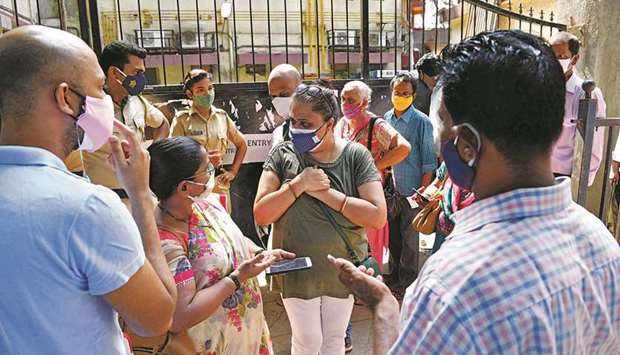Hopes that India’s rampaging second wave of Covid-19 is peaking were set back yesterday as record daily infections and deaths were reported and as the virus spread from cities to villages that were poorly equipped to cope.
Government modelling had forecast a peak by Wednesday in infections that have overwhelmed the healthcare system, with hospitals running out of beds and medical oxygen.
A record 412,262 new cases and 3,980 deaths were reported over the past 24 hours, taking total infections past 21mn and the overall death toll to 230,168, health ministry data showed.
“This temporarily halts speculations of a peak,” Rijo M John, a professor at the Indian Institute of Management in the southern state of Kerala, said on Twitter.
While the capital New Delhi and several other cities have been hardest hit so far, limited public healthcare, including a dearth of testing facilities, means the threat is grave in rural areas that are home to nearly 70% of the 1.3bn population.
In the town of Susner in Madhya Pradesh state, patients were being treated outdoors under trees, on blankets on the ground.
Prime Minister Narendra Modi’s government welcomed US President Joe Biden’s announcement that he would support waiving intellectual property rights for Covid-19 vaccinations.
Such a waiver would make vaccines more widely available, although it could take months for the World Trade Organisation to hammer out any deal.
While India is the world’s biggest vaccine maker, it is struggling to produce enough doses.
Its two current vaccine producers will take two months or more to boost monthly output to more than 110mn doses from 70mn-80mn.
At a meeting with his top officials yesterday, Modi stressed that Indian states must keep up vaccination rates and that healthcare workers involved in the inoculation campaign must not be diverted to other tasks, the government said.
Although the country has administered at least 157mn vaccine doses, its rate of inoculation has fallen sharply in recent days.
Modi has been widely criticised for not acting sooner to suppress the second wave, after religious festivals and political rallies drew tens of thousands of people in recent weeks and became “super spreader” events.
Several Indian states have imposed various levels of social restrictions to try to stem infections, but the federal government has resisted imposing a national lockdown.
The southern state of Kerala yesterday announced it will impose nine days of curbs on movement from Saturday.
In the office of a crematorium in Delhi, the floor and shelves were overflowing with earthen pots, plastic packets and steel containers filled with the ashes of people who have died from Covid-19. “Our lockers are full. We cannot store any more ashes. We used to get around 40 Covid-19 bodies a day. We are now telling relatives to take the ashes with them on the same day,” Pankaj Sharma, a manager at the crematorium, said.
With Delhi running short of ambulances, authorities have teamed up with a non-profit organisation to turn some of the city’s ubiquitous three-wheeled autorickshaws into makeshift ambulances for Covid-19 patients.
Pandemic ‘drove 230mn Indians into poverty’
Around 230mn Indians fell into poverty due to the pandemic last year with young people and women the hardest hit, and the current second wave threatens to make matters even worse, a new study has said. India’s stringent months-long lockdown from last March put around 100mn people out of work, the report by the Bangalore-based Azim Premji University said, with around 15% unable to find jobs even by the end of the year. Women were especially worse-off, with a staggering 47% of female workers unable to secure employment even after virus restrictions were lifted, according to the study. The report, which defined people in poverty as those living on less than Rs375 ($5) per day, said: “Though incomes fell across the board, the pandemic has taken a far heavier toll on poorer households.” An estimated 50mn Indians were expected to climb out of poverty last year, instead the poorest 20% of households saw their entire income vanish in April and May as business ground to a halt.

People stand outside a Mumbai vaccination centre yesterday which was closed due to the shortage of Covid-19 vaccines.
